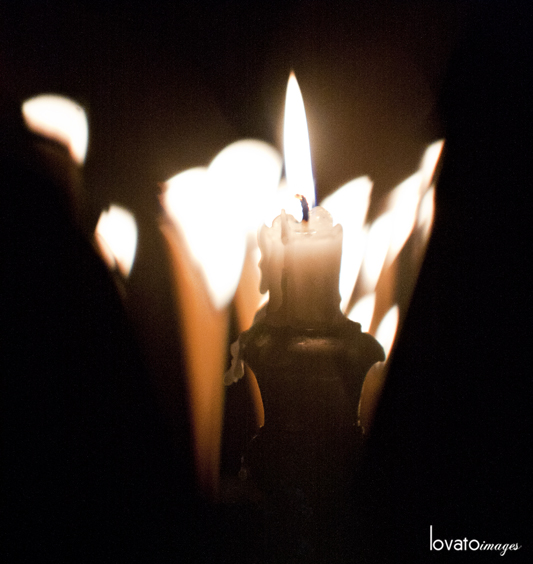This weekend is my ‘Greek Easter.’ This means, amongst many other things, that the Lovato Images office will be shutting down until Monday. Besides a quick 6 hours of wedding photography tomorrow, I’ll be at church all weekend! I thought I’d share a piece by fellow Orthodox Rita Wilson on this amazing week (my personal additions are done in brackets):

”
In order for “Greek Easter” to be celebrated the same week as “American Easter,” Passover has to have been celebrated already. We Greeks don’t do Easter until after Passover, because how can you have Easter before Passover? Jesus went to Jerusalem to celebrate Passover, after all.
Here are some of the things that non-Greeks may not know about Greek Easter: We don’t do bunnies. We don’t do chocolate. We don’t do pastels.
We do lamb, sweet cookies, and deep red. The lamb is roasted, the sweet cookies are called Koulorakia and are twisted like a braid, and our Easter eggs are dyed one color only: blood red. There is no Easter Egg hunt. There is a game in which you crack your red egg against someone else’s red egg hoping to have the strongest egg, which would indicate you getting a lot of good luck.
Holy Week, for a Greek Orthodox, means you clear your calendar, you don’t make plans for that week at all because you will be in church every day, and you fast. [Many years], in addition to not eating meat and dairy, [I give up something else I enjoy like cookies or coffee or beer].
…In the Good Friday service, the Epitaphio, [which represents the tomb of the dead body of Christ,] is carried outside by men, as if they are pall bearers, followed by worshippers carrying lit candles protected from dripping on your clothes and on others by having a red plastic cup that sits below the flame to catch the wax drippings. Every Greek person knows all too well the smell of burning hair.
It is somber and quiet as we follow the Epitaphio, in candlelight, from the altar to the outdoors, in order for it to circle the church before it returns back to the altar. We sing beautiful lamentations that make your heart break with their pure expression of sadness and [yet] hope.
One of my favorite services during Easter is Holy Unction … on the Wednesday of Holy Week. It is [the anointing of oil] for healing of our ills, physical and spiritual … It is a powerful reminder of how, with faith, we can be healed in many ways.
Midnight Mass on Saturday night, going into Sunday morning is the Anastasi service. We arrive at church at around 11 p.m [for the late start]. Kids, dressed in their suits and dresses and having been awakened from a deep sleep to come to church, groggily sit and wait holding their candles with red cup wax catchers.
As the service progresses, the moment we have all been waiting for approaches. All the lights in the church are turned off. It is pitch black. It is dead quiet. The priest lights his candle from the [only One] remaining lit altar candle, which represents the light of Christ’s love, [the Light that never dies].
From this one candle, the priest approaches the congregation and using his candle he shares his light with a few people in the front pews. They in turn share their light with the people next to them and behind them. In quiet solemnity, we wait until the entire church is lit with only the light of candles, the light that has been created by one small flame has now created a room of shared light.
And at a moment that can only be described as glorious, the priest cries out, “Xristos Anesti!” “Christ is Risen!” We respond with “Alithos Anesti!” “Truly, He is Risen!” We sing in glorious song with the choir. [We rejoice. We celebrate the end of suffering, the end of a weakness and the Resurrection of the Light of life].
After the service is over, we go to the [Midnight Meze that the church throws in the parish hall at 2:30 in the morning, where we break our fast, eat meat and cheese, drink wine, crack eggs, laugh, feast and celebrate until] we see the sun rise. Or is it the Son rise?
The next day is usually followed by a late sleep in, then getting up and doing the same thing you just did but in the daytime at the Easter Picnic, [after the Agape Service at noon. In this service, one of my favorites, they read the Gospel reading in 12 languages. It shares the message that Everlasting Life is for everyone.]
I have to say, the Greeks know how to do Easter. Make no mistake. This is the most important holiday in our church. It is a beautiful week. I haven’t even begun to touch on what the week is really like. This is a sampling of a sampling of what it is like. It is so much [deeper], so much richer than I have written here.
But one thing is clear. It is a powerful, beautiful, mysterious, humbling, healing and moving week. It is filled with tradition and ritual. It is about renewal and faith. [It is the axis on which our year turns and the point we all look to for strength. Kali Anastasi]!
”
If you liked what you just saw here, sign up for The Picture of the Every Couple of Days. It’s an email I send out every couple of days with one image and a few words. It’s a nice refresher for your inbox, aiming only to keep your interest enthused and your inspiration engaged. Check out the most recent Picture of the Every Couple of Days here.





